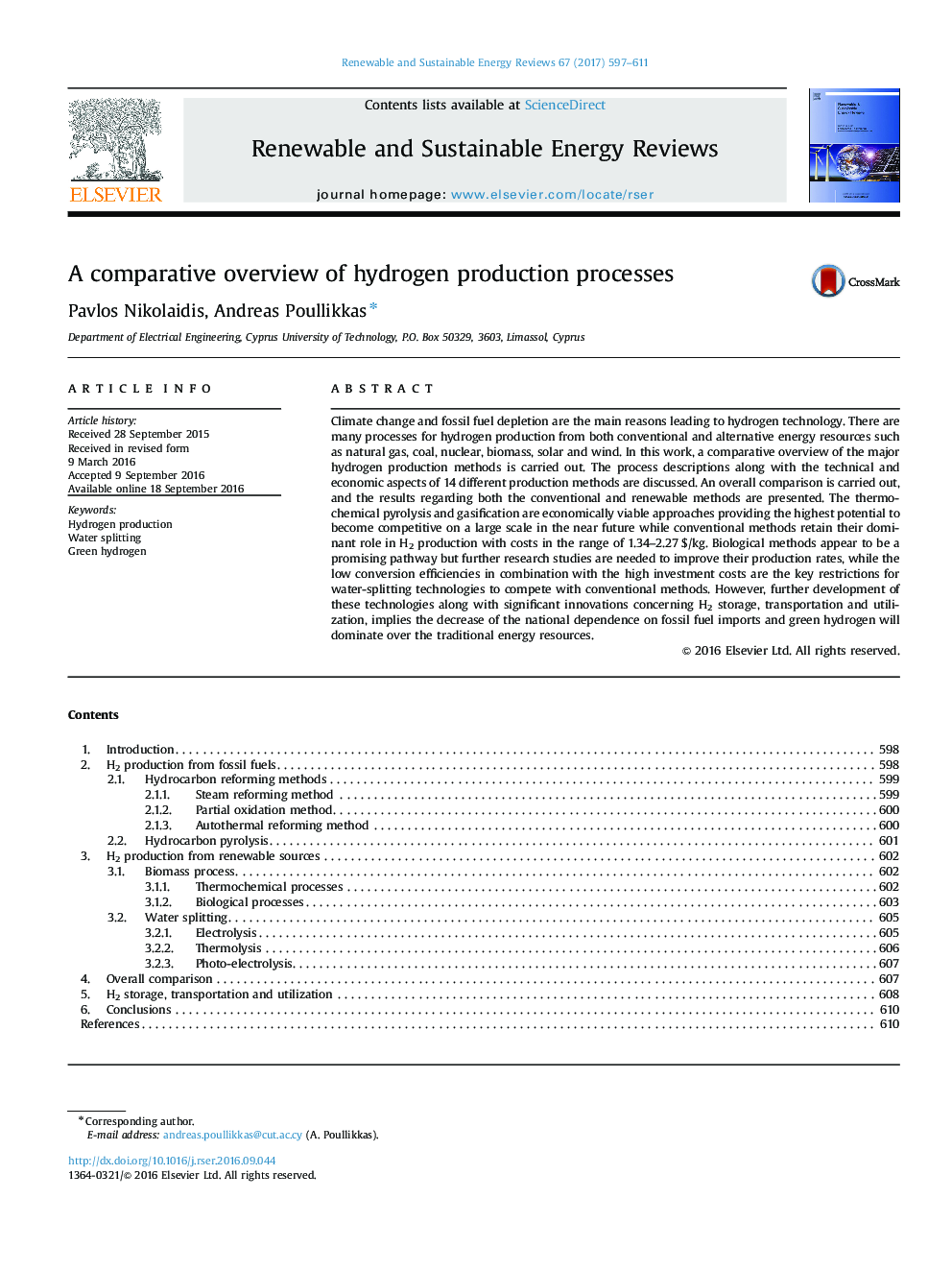| Article ID | Journal | Published Year | Pages | File Type |
|---|---|---|---|---|
| 5482757 | Renewable and Sustainable Energy Reviews | 2017 | 15 Pages |
Abstract
Climate change and fossil fuel depletion are the main reasons leading to hydrogen technology. There are many processes for hydrogen production from both conventional and alternative energy resources such as natural gas, coal, nuclear, biomass, solar and wind. In this work, a comparative overview of the major hydrogen production methods is carried out. The process descriptions along with the technical and economic aspects of 14 different production methods are discussed. An overall comparison is carried out, and the results regarding both the conventional and renewable methods are presented. The thermochemical pyrolysis and gasification are economically viable approaches providing the highest potential to become competitive on a large scale in the near future while conventional methods retain their dominant role in H2 production with costs in the range of 1.34-2.27Â $/kg. Biological methods appear to be a promising pathway but further research studies are needed to improve their production rates, while the low conversion efficiencies in combination with the high investment costs are the key restrictions for water-splitting technologies to compete with conventional methods. However, further development of these technologies along with significant innovations concerning H2 storage, transportation and utilization, implies the decrease of the national dependence on fossil fuel imports and green hydrogen will dominate over the traditional energy resources.
Related Topics
Physical Sciences and Engineering
Energy
Renewable Energy, Sustainability and the Environment
Authors
Pavlos Nikolaidis, Andreas Poullikkas,
